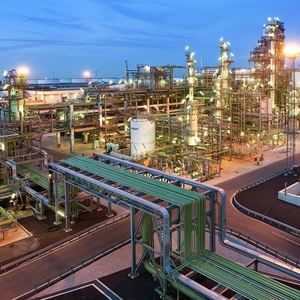Neste selects Rotterdam as location for proposed biorefinery

SOURCE: Neste
March 16, 2021
BY Neste
Neste announced in March 2020 an intention to increase its renewable products production capacity in Europe according to the company strategy. The company has now concluded a thorough study phase concerning the two possible locations, Porvoo, Finland and Rotterdam in the Netherlands. Neste has existing sites in both locations. While there are many positive drivers for both sites, the difference between the costs is significant in favor of Rotterdam.
“I appreciate the open dialogue we have had with the authorities both in Finland and in the Netherlands throughout the study phase. We have witnessed a constructive approach to find the best solutions to support our future growth,” says Peter Vanacker, president and CEO of Neste.
Advertisement
Advertisement
“Based on the thorough studies and calculations, the overall cost of the investment is significantly lower in Rotterdam. Our decision relies on ensuring our future competitiveness and our renewables’ growth strategy execution,” continues Vanacker.
The criteria for site selection include current markets and regulatory framework supporting market growth, raw material sourcing opportunities, investment and operating costs, infrastructure and low carbon utilities as well as local synergies and incentives.
The key aspects contributing to the overall cost difference are logistics costs, site-specific construction costs and availability of low-carbon hydrogen supply. Further, Porvoo site is more complex which leads to a higher execution risk level and longer construction schedule. Rotterdam, in turn, benefits from the proximity of new markets for Renewable Aviation and Renewable Polymers and Chemicals as well as proximity to raw material sources.
Advertisement
Advertisement
Neste aims at creating readiness for a final investment decision by the Board of Directors towards the end of 2021 or early 2022. In any case, the company is investing significantly in Finland, and in particular to the Porvoo site, driven by the commitment to reach carbon neutral production by 2035. Further, Neste is accelerating its investments also into future technologies and raw materials. Finland is, and continues to be, the company’s Research, Development and Innovation hub.
Related Stories
The U.S. Energy Information Administration maintained its forecast for 2025 and 2026 biodiesel, renewable diesel and sustainable aviation fuel (SAF) production in its latest Short-Term Energy Outlook, released July 8.
XCF Global Inc. on July 10 shared its strategic plan to invest close to $1 billion in developing a network of SAF production facilities, expanding its U.S. footprint, and advancing its international growth strategy.
U.S. fuel ethanol capacity fell slightly in April, while biodiesel and renewable diesel capacity held steady, according to data released by the U.S. EIA on June 30. Feedstock consumption was down when compared to the previous month.
XCF Global Inc. on July 8 provided a production update on its flagship New Rise Reno facility, underscoring that the plant has successfully produced SAF, renewable diesel, and renewable naphtha during its initial ramp-up.
The USDA’s Risk Management Agency is implementing multiple changes to the Camelina pilot insurance program for the 2026 and succeeding crop years. The changes will expand coverage options and provide greater flexibility for producers.
Upcoming Events










